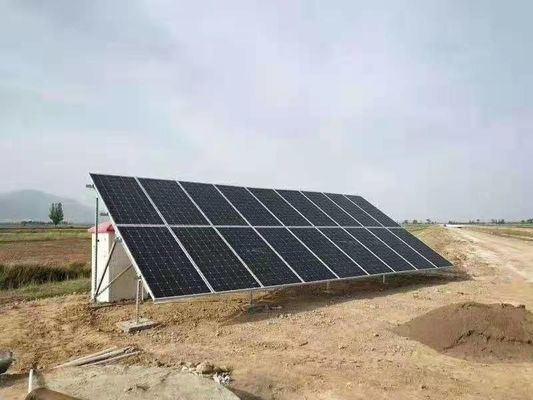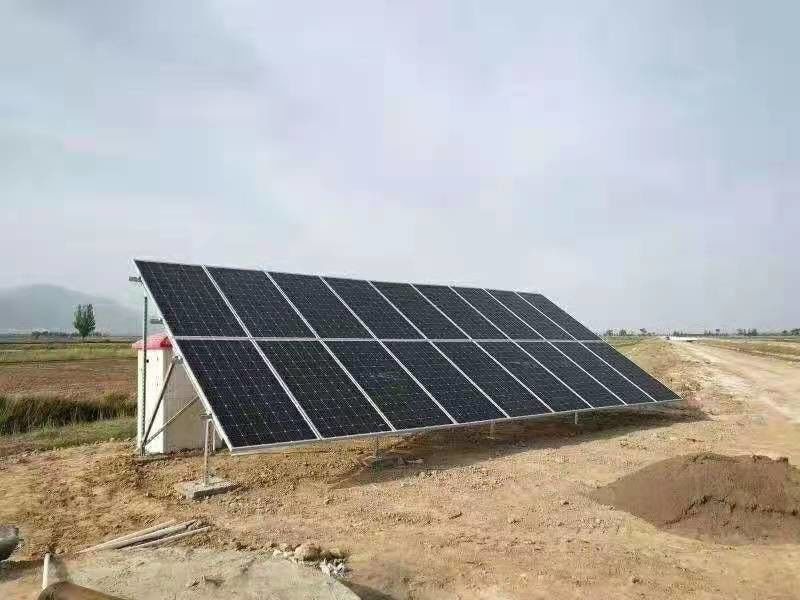GPOWER IEC Solar Water Pumping System For Agriculture
Product Details:
| Place of Origin: | P.R.CHINA |
| Brand Name: | GPOWER |
| Certification: | CE,ROSE,TUV,IEC |
| Model Number: | GPU series |
Payment & Shipping Terms:
| Minimum Order Quantity: | 1 KIT |
|---|---|
| Price: | 299 USD PER KIT |
| Packaging Details: | EXPORTING BOX |
| Payment Terms: | L/C, D/P, T/T |
|
Detail Information |
|||
| Highlight: | GPOWER Solar Water Pumping System,IEC Solar Water Pumping System,IEC Solar Pumps For Agriculture |
||
|---|---|---|---|
Product Description
Solar Water Pumps for Off-Grid Farm, Ranch, and Homestead
Everyone knows that water is essential for people and the things that we grow. The problem, however, is that access to water resources can be limiting in settings that are far removed from municipal infrastructure. Think ranches, farms, cabins, and other off-grid dwellings.
Land users in such remote settings usually have a couple of options: use the distant power grid to run an electric-powered well pump, or use fuel-powered pumps to draw from a pond or river. Tying into the grid can cost a lot when new electrical lines must be run and then there are the recurring costs for usage.
Similarly, gasoline or diesel-powered pump setups can be pricey, require constant refueling, and can be prohibitive to maintain. And in our Leaf House Tea garden, we are all too familiar with the downsides of using gasoline pumps to move water from a pond and into our drip irrigation system.
![]()
Energy Demand of Solar Pumps
Several factors determine the energy demands of solar water pumps. The head, or height that the water must be pulled or pushed from the water source, largely determines power need. For instance, surface water, holding tanks, or deep wells will have different demands. The distance water must travel and dimensions of water lines used are additional considerations. An obvious one is the water demand itself which is often reported in gallons per day.
An important thing to note here is that higher energy demands translate to more solar panels. More panels mean more cost and more infrastructure. Therefore, while pumps rated for solar use may be slower on average, they will produce just as much over the solar day as standard A/C pumps but at a portion of the cost.
As explained above, solar pumps are slower than A/C pumps, so it will take longer each day to meet the total gallons needed. But don’t fret because energy demands balance out at the end of the day.
Unlike A/C pumps that draw a lot of power to pump quickly and shut off, solar pumps work at the same rate that solar energy is being converted. In other words, water is pumped as long as the sun shines.
A setup like this doesn’t require batteries, and when sunshine is abundant, a solar pumping system can fill an auxiliary tank to be drawn from on days when the sun is hiding.
Solar pumping systems can be scaled to fulfill most water needs but can be limited by depth to the water source. As discussed, the energy and cost advantage of pumps for solar applications is due to lower power demand. However, this translates to lower overall strength and output. Most pumps can provide between 75 and 350 feet of lift. Although some are rated for greater depth, the increased cost of these products diminishes the benefit of solar pumping.
Case: Solar Pumps in Senegal
![]()
In rural Senegal, water is the most limiting factor for vegetable productivity. Water use is also the largest consumer of time and labor for gardens where the watering is done by hand.
In this setting, tapping into the electrical grid is usually not an option, and once gardens are above a certain scale, hand drawing water is not an option either. When international aid organizations partner with these communities to build sustainable food practices, it is solar pumping systems that local farmers want.
A standard setup for a Senegalese community garden is to have a centralized well that feeds several cisterns located through the garden. Solar pumps are established to draw up water and fill the reservoir attached to the well. This reservoir then gravity feeds water to cisterns throughout the garden. From here, the gardeners fill up buckets at waist-height cisterns closest to their vegetable plot.
There is no shortage of sunlight during the vegetable-growing season in Senegal, and there is enough solar energy to supply all the water demand. With an efficient flow rate, there is less risk of drying up the well through over-pumping and drawdown. This is an example featuring the essence of solar pumping as a technology that has a big impact on productivity.





